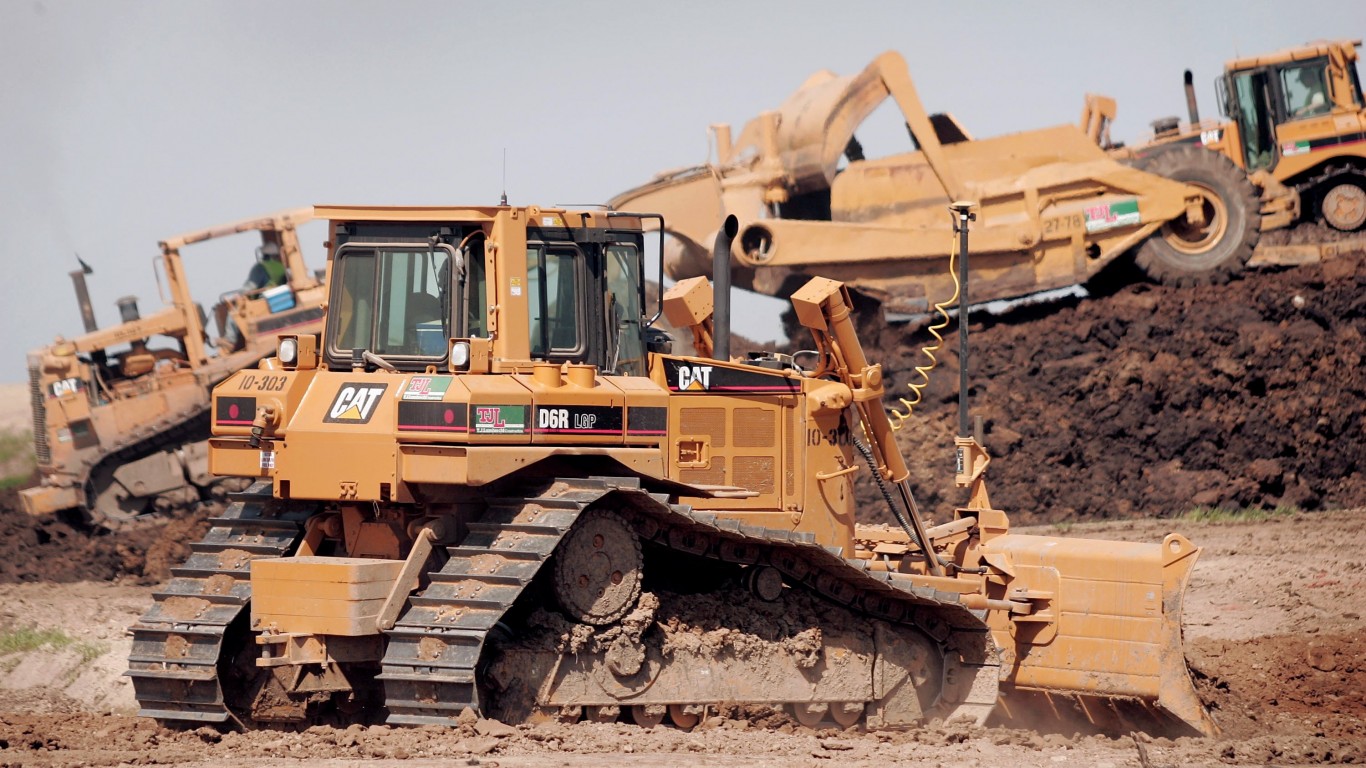Industrials
As Caterpillar Maintains Its Dividend, Just How Safe Is That Dividend in the Recession Ahead?

Published:

Caterpillar Inc. (NYSE: CAT) has joined the list of large companies issuing press releases about maintaining their current dividend. The industrial giant maintained its quarterly cash dividend of $1.03 per common share for the May 20, 2020 payable date to shareholders of record at the end of April 20, 2020. The language was more or less the same as it was in prior dividend announcements, and Caterpillar’s stock rose on the announcement.
The real question to consider is whether or not Caterpillar will be able to keep hiking its dividend as investors have grown to expect in the current recession.
This is a case of good news news vs. bad news. It is still far too soon to be predicting that major companies, including Caterpillar, will be forced into cutting dividends. That said, if the coronavirus impact and the instant recession that it has caused lingers for a longer period of time, or if things start to get worse after the economy starts to boot back up, then many companies which have always had safe and stable dividend hikes will be back under the investing microscope.
Caterpillar did restate that it has paid dividends every year since it was formed and that the company has also paid out a quarterly dividend since 1933. Caterpillar also confirmed that it has a history of 26 consecutive years of dividend hikes and that it is a member of the S&P 500 Dividend Aristocrats.
When Caterpillar issued 2020 guidance of $8.50 to $10.00 per share after its fourth-quarter earnings report in January, the overall impact of the coronavirus was still more or less just a China issue as that was the epicenter and where the shutdowns had been. And Caterpillar was also in the same boat as other U.S. companies expecting a recovery between the U.S. and China with the phase-one trade pact signed.
The new environment has made for harder times and growth is no longer expected. In the fourth-quarter of 2019, Caterpillar’s revenues down 8% and its full year 2019 revenues were down 2% versus 2018. Caterpillar had $26.1 billion in long-term debt as of the end of 2019, with total long-term liabilities of $37.2 billion.
It was on March 26 that Caterpillar withdrew its guidance due to the COVID-19 pandemic and did confirm supply chain issues. The company did simultaneously say that its financial position was still strong as it ended 2019 with $8.3 billion of cash and available global credit facilities of $10.5 billion. Still, it is going through cost cuts.
The big problem in trying to forecast a dividend issue today is that the Refinitiv consensus analyst targets are calling for $6.82 in earnings per share in 2020 while sales are forecast to fall 15%. The consensus estimates are $8.46 in earnings per share with only a 4% recovery in revenues in 2021. Caterpillar’s earnings were $11.06 per share in 2019.
If Caterpillar’s earnings do manage to come in anywhere close to expectations, then it seems likely that the dividend will be safe. If the current insta-recession continues to get worse and manages to last far longer than expected and earnings expectations are unrealistic, then Caterpillar could have some difficult decisions to make ahead.
What is more likely than a dividend cut in the near-term is that Caterpillar will, in the coming weeks, either announce that it is maintaining its dividend or is only raising its dividend marginally. Looking back at the press release from May of 2019 for its dividend hike at that time showed that the dividend was hiked by 20%. The company had further noted in May of 2019 that it was planning to return substantially all free cash flow from its Machine, Energy & Transportation operations to shareholders via continued dividend growth and via additional consistent share repurchases. At that time, the company was seeking to double those services sales to $28 billion by 2026 along with higher margins.
And to further show the good news versus bad news, wagering odds would be calling for just a slight gain to the dividend when it is announced. Analysts have been taking their target prices down during March:
Caterpillar shares were last seen up 2.3% at $124.70 on Wednesday, with a 52-week range of $87.50 to $150.55. its consensus analyst target price from Refinitiv has come down to $130.90 in recent days.
The average American spends $17,274 on debit cards a year, and it’s a HUGE mistake. First, debit cards don’t have the same fraud protections as credit cards. Once your money is gone, it’s gone. But more importantly you can actually get something back from this spending every time you swipe.
Issuers are handing out wild bonuses right now. With some you can earn up to 5% back on every purchase. That’s like getting a 5% discount on everything you buy!
Our top pick is kind of hard to imagine. Not only does it pay up to 5% back, it also includes a $200 cash back reward in the first six months, a 0% intro APR, and…. $0 annual fee. It’s quite literally free money for any one that uses a card regularly. Click here to learn more!
Flywheel Publishing has partnered with CardRatings to provide coverage of credit card products. Flywheel Publishing and CardRatings may receive a commission from card issuers.
Thank you for reading! Have some feedback for us?
Contact the 24/7 Wall St. editorial team.